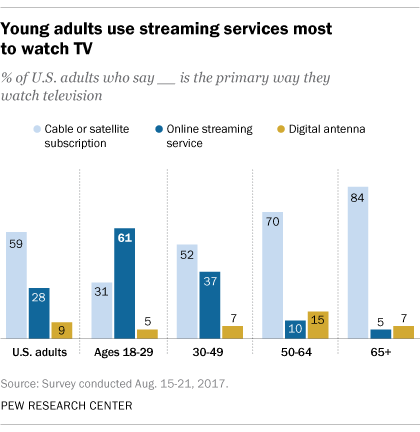
There is a whole lot of jargon and acronyms used in the media business, and perhaps even more so for those that create and sell software in that industry. Zixi’s Emmy-winning Software-Defined Video Platform focuses specifically on solving problems that often get lumped by the industry into a catchall phrase “video streaming.” That term doesn’t have an official, precise meaning necessarily, but metaphorically you have been watching “video streaming” for a very long time, if you have owned some sort of television in the last 50 years. Video (and audio) that comes to your TV is “streamed” over-the-air which reaches an antenna, or “streamed” through the cable that is connected to your cable box or OTT box, or “streamed” through the satellite dish on your roof. All of these delivery methods are different versions of streaming or transmission paths. Live streaming, Live linear streaming, and Video-on-Demand streaming, are terms that are sometimes used interchangeably, though technically they are different methods of transmission that can require different kinds of software and equipment to carry out.
Live Streaming

This type of streaming is something that most people have experienced because nearly all television programs seen “over the air”, for example from a cable or satellite network, are television shows that have been programmed to start and end at a pre-scheduled time. There is a difference between live linear video streaming and Video-On-Demand streaming. Live linear video streaming is typically used to denote those who program shows to air 24 hours a day, 7 days a week, on a schedule.
The difference in experience between live linear video and VOD is the difference between “leaning forward” where you are making the selections and “leaning back” where programming is send your way. VOD distribution is dominated by media companies who are mostly long-time broadcast, cable, and satellite providers with deep libraries of content available for viewing. Increasingly, these libraries are being monetized through free ad-supported television (FAST) applications, where programmers create curated linear channels that are played out as a “lean back” experience. Zixi delivers live linear and FAST channel experiences, playing a critical role connecting the content owner or programmer with distribution partners and OTT platforms. Traditionally, linear TV was delivered from the programmer playout environment to the distributor environment over satellite links. Zixi has played a role in enabling programmers to transition away from satellite distribution, to rapidly spin up, monetize and customize linear channels that can be transmitted to a constantly growing number of distribution partners more cost effectively and with far greater commercial agility than satellite.
Video on-Demand Streaming (VOD) has been the fast-growing segment of streaming applications. VOD content is often a media company’s entire back catalog of owned or licensed content. VOD has changed how video content is delivered to consumers, and it is interesting to note that VOD workflows often still rely heavily on traditional broadcast distribution workflows.
Sites like Netflix, Hulu and Amazon Prime are good examples of Video on-Demand streaming (though Hulu and Amazon Prime now include access to a growing number of live linear and FAST channels in addition to VOD). These sites are more akin to the meaning of “lean forward” experiences because users have to “search and click” in their applications – content does not play automatically like happens when you turn on a traditional TV. Most of the content on these sites was originally viewed through traditional live linear broadcast outlets so they are often known for branded entertainment titles available within their walled gardens.
The distinction is that Video on-demand Streaming is not necessarily a direct competitor to broadcast streaming or live linear video. Most Video-on-Demand streaming sites stand on the shoulders of traditional live linear video content and provide an ease of viewing and time shifting.
Many consumers still think of YouTube when they think of the word streaming. Today there are many online VOD distributors, but it is still difficult for content creators to build an audience large enough on any one of these platforms to support ongoing production at scale. YouTube, Twitch, and a handful of others, have a few content creators with huge viewership numbers rivaling traditional media brands. However, even those content creators will likely want to expand their distribution options outside of the single platforms upon which they started. The number and variety of ways to distribute streamed content is interesting and challenging – and operating these businesses optimally is changing constantly. That is why Zixi works with over 200 OEM, service, and support partners to help content creators navigate the varied choices business owners have in distributing their content throughout the world.

